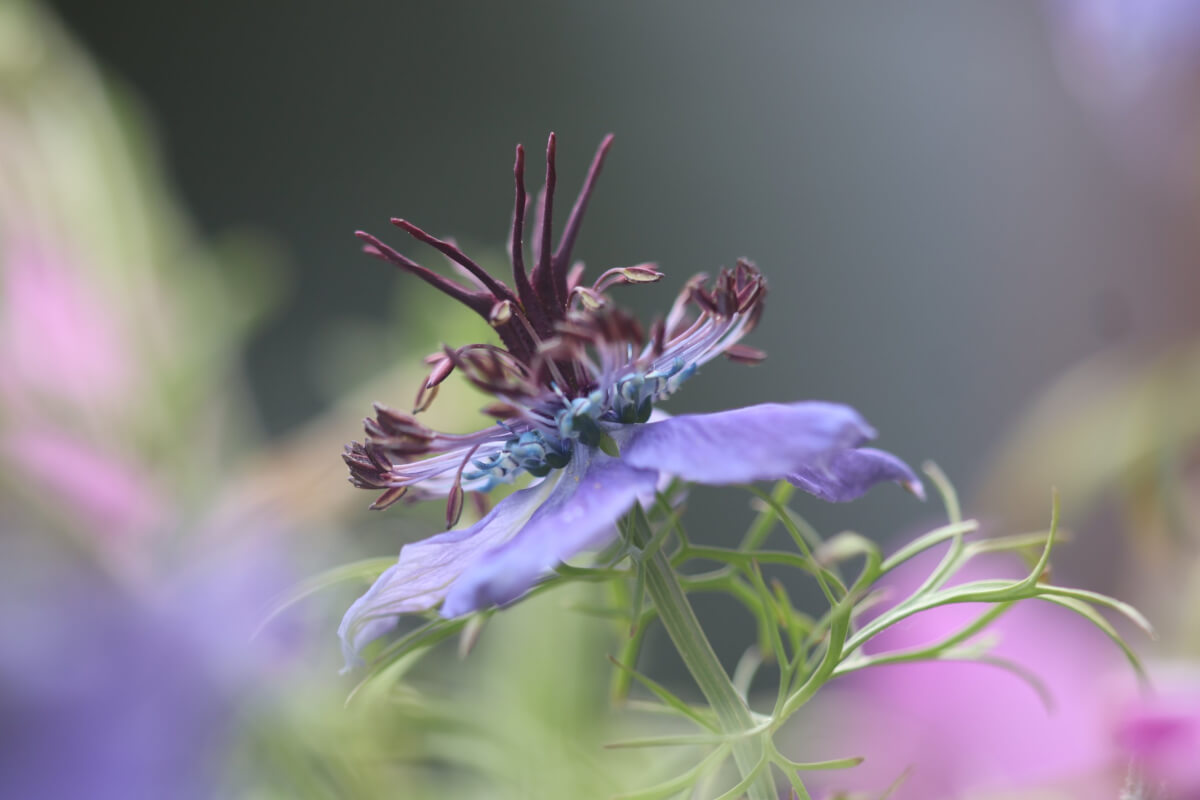For today’s Flower Friday, we have an entirely new species we’ve never previously featured! Nigella gets the hot seat today and it has been a fascinating flower to grow.
The Nigella genus is somewhat small, with only 18 known species. However, it’s within the ranunculaceae family, which is responsible for many flowering classics you’re likely familiar with like ranunculus, delphinium and clematis. Curiously, Nigella will actually produce fruit as its reproduction method, producing a large pod containing numerous seeds.
Some varieties of Nigella are used in culinary preparations. The seeds of the Nigella Sativa variety produce a spice that is often referred to as black caraway. The spice has other names, too, like black coriander, black cumin and black onion seed. You’d find this spice most commonly used in Ethiopian, Middle Eastern, Polish and South Asian cuisines.
Nigella has a rich history in medicine, thanks to its strong production of phytochemical compounds. It has many studies showing efficacy as an anti-inflammatory, anti-oxidative, anti-fungal, anti-cancer, antibacterial and even anti-viral properties. Common medical applications of Nigella (typically, the seeds) are used to treat indigestion, parasites, eczema, acne, diabetes, asthma and a host of other common ailments. It has even been found to counter the negative effects of radiotherapy treatment, such as those used in cancer treatments.
We’ve been truly enjoying this flower for its “alien-like” tentacles and the absolutely wild seed pods that it produces. It’s an attractive flower that grabs the attention, providing multiple layers of fascinating flora to observe. Most striking are the deep violet petals, followed by the early burgundy colored stamen that will eventually develop into the seeding fruit. Upon closer inspection, though, you’ll observe a lovely teal colored ring circling the fruit’s pod. An amazing show of colors and a rare combination to see on a singular flower.
Nigella has been rather compliant for our container growing efforts, easily filling in its space without getting too obnoxious. If grown without competition, the plants can get much larger and push upwards of three feet. So, it’s flexible as both a container flower and a substantial annual that holds its own in the garden. For us, Nigella has definitely won our hearts and will see regular production at the Frosty Garden homestead for years to come.
Happy Friday, hope this post makes your weekend a bit brighter!


